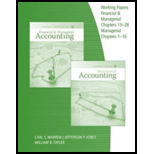
Concept explainers
Suppy chain management
The following is an excerpt from an article discussing supplier relationships with the Big Three North American automakers.
“The Big Three select suppliers on the basis of lowest price and annual price reductions,” said Neil De Koker, president of the Original Equipment Suppliers Association. “They look globally for the lowest parts prices from the lowest cost countries,” De Koker said. “There is little trust and respect. Collaboration is missing” Japanese automakers want long-term supplier relationships. They select suppliers as a person would a mate. The Big Three are quick to beat down prices with methods such as electronic auctions or rebidding work to a competitor. The Japanese are equally tough on price but are committed to maintaining supplier continuity. “They work with you to arrive at a competitive price, and they are willing to pay because they want long-term partnering,” said Carl Code, a vice president at Ernie Green Industries. “They [Honda (HMC) and Toyota (TM)] want suppliers to make enough money to stay in business, grow, and bring them innovation” The Big Three's supply chain model is not much different from the one set by Henry Ford. In 1913, he set up the system of independent supplier firms operating at arm's length on short-term contracts. One consequence of the Big Three's low-price-at-all-costs mentality is that suppliers are reluctant to offer them their cutting-edge technology out of fear the contract will be resourced before the research and development costs are recouped.
Source: Robert Sherefkin and Amy Wilson, “Suppliers Prefer Japanese Business Model," Rubber & Plastics News, March 17, 2003, Vol. 24, No. 11.
- A. Contrast the Japanese supply chain model with that of the Big Three.
- B. Why might a supplier prefer the Japanese model?
- C. What benefits might accrue to the Big Three by adopting the Japanese supply chain practices?
Want to see the full answer?
Check out a sample textbook solution
Chapter 27 Solutions
Financial and Managerial Accounting - Workingpapers
- Financial Accountingarrow_forwardPlease give me true answer this financial accounting questionarrow_forwardRefer to the Hartley Ltd statement of cash flows for the year ended 31 December 2022 and answer the following questions: 1.1 Calculate the following: 1.1.1 Depreciation 1.1.2 Interest paid 1.1.3 Net increase (decrease) in cash 1.1.4 Cash balance as at 31 December 2022. 1.2 Comment on the following: 1.2.1 Cash flows from operating activities of (R390 000) 1.2.2 Cash flows from investing activities of R150 000 1.2.3 Increase in inventory of (R700 000) 1.2.4 Increase in receivables of (R500 000).arrow_forward
 Managerial AccountingAccountingISBN:9781337912020Author:Carl Warren, Ph.d. Cma William B. TaylerPublisher:South-Western College Pub
Managerial AccountingAccountingISBN:9781337912020Author:Carl Warren, Ph.d. Cma William B. TaylerPublisher:South-Western College Pub Financial And Managerial AccountingAccountingISBN:9781337902663Author:WARREN, Carl S.Publisher:Cengage Learning,
Financial And Managerial AccountingAccountingISBN:9781337902663Author:WARREN, Carl S.Publisher:Cengage Learning,- Century 21 Accounting Multicolumn JournalAccountingISBN:9781337679503Author:GilbertsonPublisher:Cengage
 Managerial Accounting: The Cornerstone of Busines...AccountingISBN:9781337115773Author:Maryanne M. Mowen, Don R. Hansen, Dan L. HeitgerPublisher:Cengage Learning
Managerial Accounting: The Cornerstone of Busines...AccountingISBN:9781337115773Author:Maryanne M. Mowen, Don R. Hansen, Dan L. HeitgerPublisher:Cengage Learning





